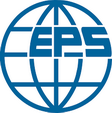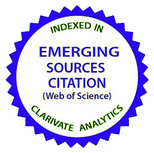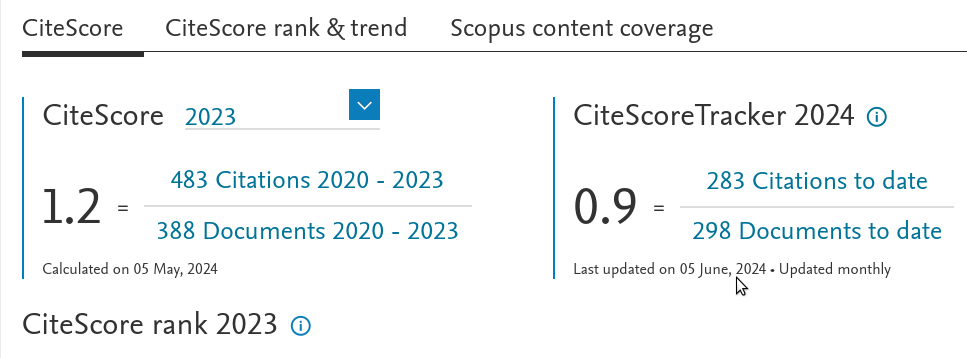Band Gap Change of Bulk ZnSxSe1–x Semiconductors by Controlling the Sulfur Content
DOI:
https://doi.org/10.15407/ujpe63.01.0033Keywords:
ZnSxSe1−x bulk crystals, direct transitions, indirect transitions, band gapAbstract
ZnSxSe1−x bulk crystals were grown by the Bridgman–Stockbarger method. The transmittance of different samples in the range from 67% to 56% at la = 1100 nm (for 4-mm samples) indicates a high optical quality of the crystals. No new states were revealed at the sulfur incorporation, and the band gap depends on the composition. The optical band gap of ZnSxSe1−x bulk crystals varies from 2.59 to 2.78 eV for direct transitions and from 2.49 to 2.70 eV for indirect transitions.
References
<li>M. Emam-Ismail, M. El-Hagary, E. Ramadan et al. Influence of y-irradiation on optical parameters of electron beam evaporated ZnSe1?xTex nanocrystalline thin films. Radiat Eff. Defects Solids. 169 (1), 61 (2014).
<a href="https://doi.org/10.1080/10420150.2013.811505">https://doi.org/10.1080/10420150.2013.811505</a>
</li>
<li>P. Shotanus, P. Dorenbos, V. Ryzhikov. Detection of CdS (Te) and ZnSe (Te) scintillation light with silicon photodiodes. IEEE Trans. Nucl. Sci. 39 (4), 546 (1992).
<a href="https://doi.org/10.1109/23.159663">https://doi.org/10.1109/23.159663</a>
</li>
<li>T. Homann, U. Hotje, M. Binnewies et al. Compositiondependent band gap in ZnSxSe1?x a combined experimental and theoretical study. Solid State Sci. 8 (1), 44 (2006).
<a href="https://doi.org/10.1016/j.solidstatesciences.2005.08.015">https://doi.org/10.1016/j.solidstatesciences.2005.08.015</a>
</li>
<li>L.S. Lai, I.K. Sou, C.W. Law et al. ZnSSe-based ultraviolet photodiodes with extremely high detectivity. Opt. Mater. 23 (1), 21 (2003).
<a href="https://doi.org/10.1016/S0925-3467(03)00053-3">https://doi.org/10.1016/S0925-3467(03)00053-3</a>
</li>
<li>G. Kudlek, N. Presser, J. Gutowski et al. Comparative optical investigations of ZnSe/GaAs epilayers grown by molecular beam and hot-wall epitaxy. J. Appl. Phys. 68 (11), 5630 (1990).
<a href="https://doi.org/10.1063/1.346975">https://doi.org/10.1063/1.346975</a>
</li>
<li>C.T. Hsu. Growth of ZnSxSe1?x layers on Si substrates by atomic layer epitaxy. Mater. Chem. Phys. 58 (1), 6 (1999).
<a href="https://doi.org/10.1016/S0254-0584(98)00238-7">https://doi.org/10.1016/S0254-0584(98)00238-7</a>
</li>
<li>J.H. Song, E.D. Sim, K.S. Baek et al. Optical properties of ZnSxSe1?x (x < 0.18) random and ordered alloys grown by metalorganic atomic layer epitaxy. J. Cryst. Growth. 214, 460 (2000).
<a href="https://doi.org/10.1016/S0022-0248(00)00130-5">https://doi.org/10.1016/S0022-0248(00)00130-5</a>
</li>
<li>P. Prete, N. Lovergine, S. Petroni et al. Functional validation of novel Se and S alkyl precursors for the low temperature pyrolytic MOVPE growth of ZnSe, ZnS and ZnSSe. Mater. Chem. Phys. 66 (2) (2000).
<a href="https://doi.org/10.1016/S0254-0584(00)00317-5">https://doi.org/10.1016/S0254-0584(00)00317-5</a>
</li>
<li>M. Ambrico, G. Perna, D. Smaldone et al. Structural and optical parameters of films deposited on quartz substrates by laser ablation. Semicond. Sci. Technol. 13 (12), 1446 (1998).
<a href="https://doi.org/10.1088/0268-1242/13/12/021">https://doi.org/10.1088/0268-1242/13/12/021</a>
</li>
<li> L. Atroshchenko, L. Gal'chinetskii, S. Galkin et al. Structure defects and phase transition in tellurium-doped ZnSe crystals. J. Cryst. Growth. 198, 292 (1999).
<a href="https://doi.org/10.1016/S0022-0248(98)01235-4">https://doi.org/10.1016/S0022-0248(98)01235-4</a>
</li>
<li> L. Atroshchenko, L. Gal'chinetskii, S. Galkin et al. Influence of the growth parameters and subsequent annealing upon structural perfectness, optical and mechanical properties of ZnSe1?xTex crystals. Func. Mat. 8 (3), 455 (2001).
</li>
<li> R. Hussein, O. Pages, F. Firszt et al. Near-forward Raman study of a phonon-polariton reinforcement regime in the Zn(Se,S) alloy. J. Appl. Phys. 116 (8), 1 (2014).
<a href="https://doi.org/10.1063/1.4893322">https://doi.org/10.1063/1.4893322</a>
</li>
<li> R. Hussein, O. Pages, S. Doyen-Schuler et al. Percolationtype multi-phonon pattern of Zn(Se,S): Backward/forward Raman scattering and ab initio calculations. J. Alloys Compd. 644, 704 (2015).
<a href="https://doi.org/10.1016/j.jallcom.2015.04.078">https://doi.org/10.1016/j.jallcom.2015.04.078</a>
</li>
<li> R. Hussein, O. Pages, A. Polian et al. Pressure-induced phonon freezing in the ZnSeS II–VI mixed crystal: phonon–polaritons and ab initio calculations. J. Phys. Condens. Matter. 28 (20), 5401 (2016).
</li>
<li> S. Venkatachalam, D. Mangalaraj, S. Narayandass et al. The effect of nitrogen ion implantation on the structural, optical and electrical properties of ZnSe thin films. Semicond. Sci. Tech. 21 (12), 1661 (2006).
<a href="https://doi.org/10.1088/0268-1242/21/12/027">https://doi.org/10.1088/0268-1242/21/12/027</a>
</li>
<li> Y. Chen, J. Li, X. Yang et al. Band gap modulation of the IV, III–V, and II–VI semiconductors by controlling the solid size and dimension and the temperature of operation. J. Phys. Chem. C. 115 (47), 23338 (2011).
<a href="https://doi.org/10.1021/jp209933v">https://doi.org/10.1021/jp209933v</a>
</li>
<li> Y Alghamdi. Composition and band gap controlled AACVD of ZnSe and ZnSxSe1?x thin films using novel single source precursors Mat. Sci. Appl. 8 (10), 726 (2017).
</li>
<li> B. Pejova, B. Abay, L. Bineva et al. Temperature dependence of the band-gap energy and sub-band-gap absorption tails in strongly quantized ZnSe nanocrystals deposited as thin films. J. Phys. Chem. C. 114 (36), 15280 (2010).
<a href="https://doi.org/10.1021/jp102773z">https://doi.org/10.1021/jp102773z</a>
</li>
<li> D.B. Judd. Fresnel reflection of diffusely incident light. J. Res. Natl. Bur. Stand. 29 (5), 329 (1942).
<a href="https://doi.org/10.6028/jres.029.017">https://doi.org/10.6028/jres.029.017</a>
</li>
<li> R.H. Bube. Photoconductivity of Solids (Wiley, 1960).
</li>
<li> R. Summitt, J.A. Marley, N.F. Borrelli et al. The ultraviolet absorption edge of stannic oxide (SnO2). J. Phys. Chem. Solids. 25 (12), 1465 (1964).
<a href="https://doi.org/10.1016/0022-3697(64)90063-0">https://doi.org/10.1016/0022-3697(64)90063-0</a>
</li>
<li> J.E. Bernard, A. Zunger, Electronic structure of ZnS, ZnSe, ZnTe, and their pseudobinary alloys. Phys. Rev. B 36 (6), 3199 (1987).
<a href="https://doi.org/10.1103/PhysRevB.36.3199">https://doi.org/10.1103/PhysRevB.36.3199</a>
</li>
<li> A.A. El-Shazly, M.M. El-Naby, M.A. Kenawy et al. Optical properties of ternary ZnSxSe1?x polycrystalline thin films. Natl. Bur. Stand. 36 (1), 51 (1985).
</li>
<li> S. Larach, R.E. Shrader, C.F. Stocker. Anomalous variation of band gap with composition in zinc sulfo-and selenotellurides. Phys. Rev. 108 (3), 587 (1957).
<a href="https://doi.org/10.1103/PhysRev.108.587">https://doi.org/10.1103/PhysRev.108.587</a>
</li>
<li> A. Ebina, E. Fukunaga, T. Takahashi. Variation with composition of the E0 and E0+?0 gaps in ZnSxSe1?x alloys. Phys. Rev. B 10 (6), 2495 (1974).
<a href="https://doi.org/10.1103/PhysRevB.10.2495">https://doi.org/10.1103/PhysRevB.10.2495</a>
</li>
<li> L.G. Suslina, D.L. Fedorov, S.G. Konnikov et al. Dependence of forbidden-band width on composition of ZnSxSe1?x mixed-crystals. Sov. Phys. Semicond. 11 (10), 1132 (1997).
</li>
<li> A.V. Novoselova, V.B. Lazarev (Eds.). Physical and Chemical Properties of Semiconductors (Nauka, 1979) (in Russian).
</li>
<li> P. Herve, L.K. Vandamme. General relation between refractive index and energy gap in semiconductors. Infrared Phys. Technol. 35 (4), 609 (1994).
<a href="https://doi.org/10.1016/1350-4495(94)90026-4">https://doi.org/10.1016/1350-4495(94)90026-4</a></li></ol>
Downloads
Published
How to Cite
Issue
Section
License
Copyright Agreement
License to Publish the Paper
Kyiv, Ukraine
The corresponding author and the co-authors (hereon referred to as the Author(s)) of the paper being submitted to the Ukrainian Journal of Physics (hereon referred to as the Paper) from one side and the Bogolyubov Institute for Theoretical Physics, National Academy of Sciences of Ukraine, represented by its Director (hereon referred to as the Publisher) from the other side have come to the following Agreement:
1. Subject of the Agreement.
The Author(s) grant(s) the Publisher the free non-exclusive right to use the Paper (of scientific, technical, or any other content) according to the terms and conditions defined by this Agreement.
2. The ways of using the Paper.
2.1. The Author(s) grant(s) the Publisher the right to use the Paper as follows.
2.1.1. To publish the Paper in the Ukrainian Journal of Physics (hereon referred to as the Journal) in original language and translated into English (the copy of the Paper approved by the Author(s) and the Publisher and accepted for publication is a constitutive part of this License Agreement).
2.1.2. To edit, adapt, and correct the Paper by approval of the Author(s).
2.1.3. To translate the Paper in the case when the Paper is written in a language different from that adopted in the Journal.
2.2. If the Author(s) has(ve) an intent to use the Paper in any other way, e.g., to publish the translated version of the Paper (except for the case defined by Section 2.1.3 of this Agreement), to post the full Paper or any its part on the web, to publish the Paper in any other editions, to include the Paper or any its part in other collections, anthologies, encyclopaedias, etc., the Author(s) should get a written permission from the Publisher.
3. License territory.
The Author(s) grant(s) the Publisher the right to use the Paper as regulated by sections 2.1.1–2.1.3 of this Agreement on the territory of Ukraine and to distribute the Paper as indispensable part of the Journal on the territory of Ukraine and other countries by means of subscription, sales, and free transfer to a third party.
4. Duration.
4.1. This Agreement is valid starting from the date of signature and acts for the entire period of the existence of the Journal.
5. Loyalty.
5.1. The Author(s) warrant(s) the Publisher that:
– he/she is the true author (co-author) of the Paper;
– copyright on the Paper was not transferred to any other party;
– the Paper has never been published before and will not be published in any other media before it is published by the Publisher (see also section 2.2);
– the Author(s) do(es) not violate any intellectual property right of other parties. If the Paper includes some materials of other parties, except for citations whose length is regulated by the scientific, informational, or critical character of the Paper, the use of such materials is in compliance with the regulations of the international law and the law of Ukraine.
6. Requisites and signatures of the Parties.
Publisher: Bogolyubov Institute for Theoretical Physics, National Academy of Sciences of Ukraine.
Address: Ukraine, Kyiv, Metrolohichna Str. 14-b.
Author: Electronic signature on behalf and with endorsement of all co-authors.













